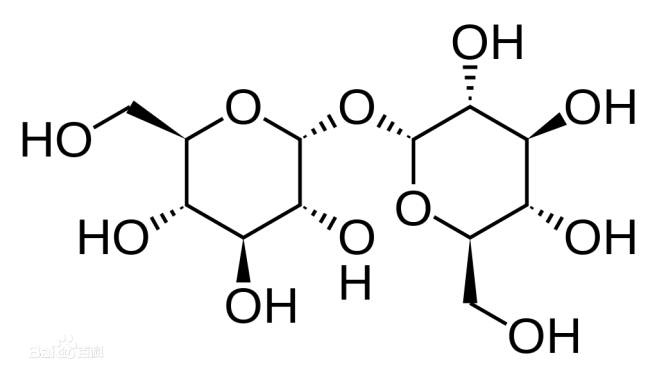发酵伴随着人类在其生活实践和社会发展的整个演变过程中,成为其最受欢迎的药物的来源,是保存食物的第一种手段,也是生物利用度的重要增强剂(McGovern et al., 2017)。该术语最初用于定义在水果和谷物糖浆上发生的酵母驱动的转化,但现在已经代表了不同行业和研究领域的许多不同微生物过程。在严格的生化定义中,发酵是指有机化合物(与氧相反)作为电子受体的能量产生生物过程(Maneein,Milledge,Nielsen,& Harvey,2018)。大型海藻(也称为海藻)是可发酵生物量的替代来源,受到生物燃料行业的高度关注,它们被用于生产乙醇和甲烷。但是,在食品或药物应用领域中,海藻发酵的探索较少。该文概述了利用海藻作为可发酵物质生产食品和天然生物活性产品的研究。还详细描述了在发酵过程中起关键作用的海藻化合物,以及海藻发酵产生的最终产品的潜在用途。
Fermentation has accompanied humans throughout the evolution of their living practices and social development, becoming the source of their most popular medicines, the first means of preserving food, and an important enhancer of bioavailability (McGovern et al., 2017). The term was originally used to define yeast-driven transformations that occurred on fruit and grain syrups, but has now come to represent many different microbial processes in different industries and research areas. In a strict biochemical definition, fermentation refers to a biological process in which organic compounds (as opposed to oxygen) act as electron acceptors for energy production (Maneein, Milledge, Nielsen, & Harvey, 2018). Macroalgae (also known as seaweeds) are an alternative source of fermentable biomass and are of high interest to the biofuel industry, where they are used to produce ethanol and methane. However, seaweed fermentation has been less explored in food or pharmaceutical applications. This paper provides an overview of research on the use of seaweeds as fermentable substances for the production of food and natural bioactive products. The seaweed compounds that play a key role in the fermentation process are also described in detail, as well as the potential uses of the final products resulting from seaweed fermentation.
环境条件和气候变化是影响海藻品质的重要因素。海流、温度、重金属浓度和光强度的变化导致褐藻中氨基酸、多糖和灰分含量的显著差异。酚类化合物是一类重要的活性化合物,对发酵具有显著的抑制作用,其含量也会随着环境和季节的变化而变化。海藻钠、灰分和多酚的含量,以及结构多糖的独特组成,可以最大限度地减少固液萃取率,但仍然可以通过改变发酵培养条件进行生物转化。目前已经发表了很多关于海藻化合物的保健和技术用途的工作。因此,与这些化合物相关的价值往往保留在发酵的海藻产品中。已知价值的海藻化合物简要地在下面详细介绍,以及它们在海藻微生物处理中的一般已知作用。
Environmental conditions and climate change are important factors affecting the quality of seaweeds. Variations in sea currents, temperature, heavy metal concentrations and light intensity lead to significant differences in amino acid, polysaccharide and ash content in brown seaweed. Phenolic compounds, an important class of active compounds with significant inhibitory effects on fermentation, also varied in content with environmental and seasonal variations. The sodium, ash and polyphenol content of seaweed, as well as the unique composition of structural polysaccharides, can minimize solid-liquid extraction rates, but still allow for biotransformation by altering fermentation culture conditions. Many works have been published on the health and technical uses of seaweed compounds. As a result, the value associated with these compounds is often retained in the fermented seaweed product. Seaweed compounds of known value are briefly detailed below, as well as their generally known roles in the microbial processing.
多糖
Polysaccharides
海藻作为天然产物的来源和作为发酵底物的最显著特征之一来自其独特的多糖组成。现代海藻在食品和制药工业中的许多用途与这些分子作为增稠剂和水胶体的使用有关。藻胶具有广泛的应用,很难用具有成本效益的替代品来替代(Holdt & Kraan, 2011)。生物活性多糖在许多物种中也很丰富,具有一些突出的生物活性,包括抗凝血、抗炎和抗肿瘤(Magalhaes et al., 2011)。
One of the most distinctive features of seaweed as a source of natural products and as a fermentation substrate comes from its unique polysaccharide composition. Many of the modern uses of seaweeds in the food and pharmaceutical industries are related to the use of these molecules as thickeners and hydrocolloids. Alginate has a wide range of applications and are difficult to be replaced by cost effective alternatives (Holdt & Kraan, 2011). Bioactive polysaccharides are also abundant in many species and possess some prominent biological activities including anticoagulant, anti-inflammatory and antitumor (Magalhaes et al., 2011).

图:海藻糖
蛋白质
Proteins
蛋白质是存在于海藻中的大量营养素,随季节变化。不同物种和季节,其变化范围为10%至40%(w/w,干重),冬季的百分比更高。海藻蛋白质氨基酸图谱长期以来一直是食品工业关注的焦点,因为大多数海藻蛋白质含有所有必需氨基酸。由于褐藻富含丙氨酸、甘氨酸、亮氨酸、赖氨酸、苏氨酸和缬氨酸,褐藻已经成为人类饮食中一种受欢迎的蛋白质来源,其中半胱氨酸、蛋氨酸、组氨酸、色氨酸和酪氨酸的含量也较低(Holdt & Kran, 2011)。此外,褐藻中的天冬氨酸和谷氨酸浓度较高,占氨基酸总量的44%(Munda, 1977; Mahre, Malde, Eilertsen, & Elvevoll, 2014)。
Proteins are nutrients rich in seaweeds and vary with the seasons. The variation ranges from 10% to 40% (w/w, dry weight) across species and seasons, with higher percentages in winter. Amino acid profiles of seaweed proteins have long been of interest to the food industry, as most seaweed proteins contain all essential amino acids. Brown seaweeds have become a popular source of protein in the human diet due to their richness in alanine, glycine, leucine, lysine, threonine and valine and lowness in cysteine, methionine, histidine, tryptophan and tyrosine (Holdt & Kran, 2011). In addition, brown seaweeds have high concentrations of aspartic acid and glutamic acid, accounting for 44% of the total amino acids (Munda, 1977; Mahre, Malde, Eilertsen, & Elvevoll, 2014).

多酚
Polyphenols
酚类是一类主要存在于植物和藻类中的有机化合物。这些高度多样化的植物化学物质是次生代谢产物,既可能是自然发育的结果,也可能是对环境压力的反应(Naczk & Shahidi, 2006)。它们在植物和草药中的普遍存在,长期以来与传统医学相关,已巩固了它们作为生物活性化合物的作用,对人类发展具有重要意义(Rai, Pandey, & Sahoo, 2019)。现代生物医学研究将多种生物活性与酚类化合物相关联,包括但不限于抗菌、抗氧化、抗炎、抗糖尿病和抗癌(Bulzomi et al., 2012)。
Phenols are a group of organic compounds found mainly in plants and algae. These highly diverse phytochemicals are secondary metabolites that may be both the result of natural development and a response to environmental stress (Naczk & Shahidi, 2006). Their prevalence in plants and herbs, associated with traditional medicine for a long time, has cemented their role as bioactive compounds which are of great importance to human development (Rai, Pandey, & Sahoo, 2019). Modern biomedical research has associated a variety of biological activities with phenolic compounds, including but not limited to antibacterial, antioxidant, anti-inflammatory, antidiabetic, and anticancer (Bulzomi et al., 2012).

图:褐藻多酚
参考文献
[1]McGovern Patrick,Jalabadze Mindia,Batiuk Stephen,Callahan Michael P,Smith Karen E,Hall Gretchen R,Kvavadze Eliso,Maghradze David,Rusishvili Nana,Bouby Laurent,Failla Osvaldo,Cola Gabriele,Mariani Luigi,Boaretto Elisabetta,Bacilieri Roberto,This Patrice,Wales Nathan,Lordkipanidze David. Early Neolithic wine of Georgia in the South Caucasus.[J]. Proceedings of the National Academy of Sciences of the United States of America,2017,114(48):
[2]Maneein, S.; Milledge, J.J.; Nielsen, B.V.; Harvey, P.J. A Review of Seaweed Pre-Treatment Methods for Enhanced Biofuel Production by Anaerobic Digestion or Fermentation. Fermentation 2018, 4, 100. https://doi.org/10.3390/fermentation4040100
[3]Susan Løvstad Holdt,Stefan Kraan. Bioactive compounds in seaweed: functional food applications and legislation[J]. Journal of Applied Phycology,2011,23(3):
[4]Kaline Dantas Magalhaes,Leandro Silva Costa,Gabriel Pereira Fidelis,Ruth Medeiros Oliveira,Leonardo Thiago Duarte Barreto Nobre,Nednaldo Dantas-Santos,Rafael Barros Gomes Camara,Ivan Rui Lopes Albuquerque,Sara Lima Cordeiro,Diego Araujo Sabry,Mariana Santana Santos Pereira Costa,Luciana Guimaraes Alves,Hugo Alexandre Oliveira Rocha. Anticoagulant, Antioxidant and Antitumor Activities of Heterofucans from the Seaweed Dictyopteris delicatula[J]. IJMS,2011,12(5):
[5]Maehre Hanne K,Malde Marian K,Eilertsen Karl-Erik,Elvevoll Edel O. Characterization of protein, lipid and mineral contents in common Norwegian seaweeds and evaluation of their potential as food and feed.[J]. Journal of the science of food and agriculture,2014,94(15):
[6]Munda I.M.. Differences in amino acid composition of estuarine and marine fucoids[J]. Elsevier,1977,3:
[7]Rai Amit Kumar,Pandey Ashok,Sahoo Dinabandhu. Biotechnological potential of yeasts in functional food industry[J]. Trends in Food Science & Technology,2019,83:
[8]Marian Naczk,Fereidoon Shahidi. Phenolics in cereals, fruits and vegetables: Occurrence, extraction and analysis[J]. Journal of Pharmaceutical and Biomedical Analysis,2006,41(5):
[9]Raúl E. Cian,Olga Martínez-Augustin,Silvina R. Drago. Bioactive properties of peptides obtained by enzymatic hydrolysis from protein byproducts of Porphyra columbina[J]. Food Research International,2012,49(1):
投稿者:刘亚文 博士研究生
审核导师:傅鹏程 教授
 公众号
公众号